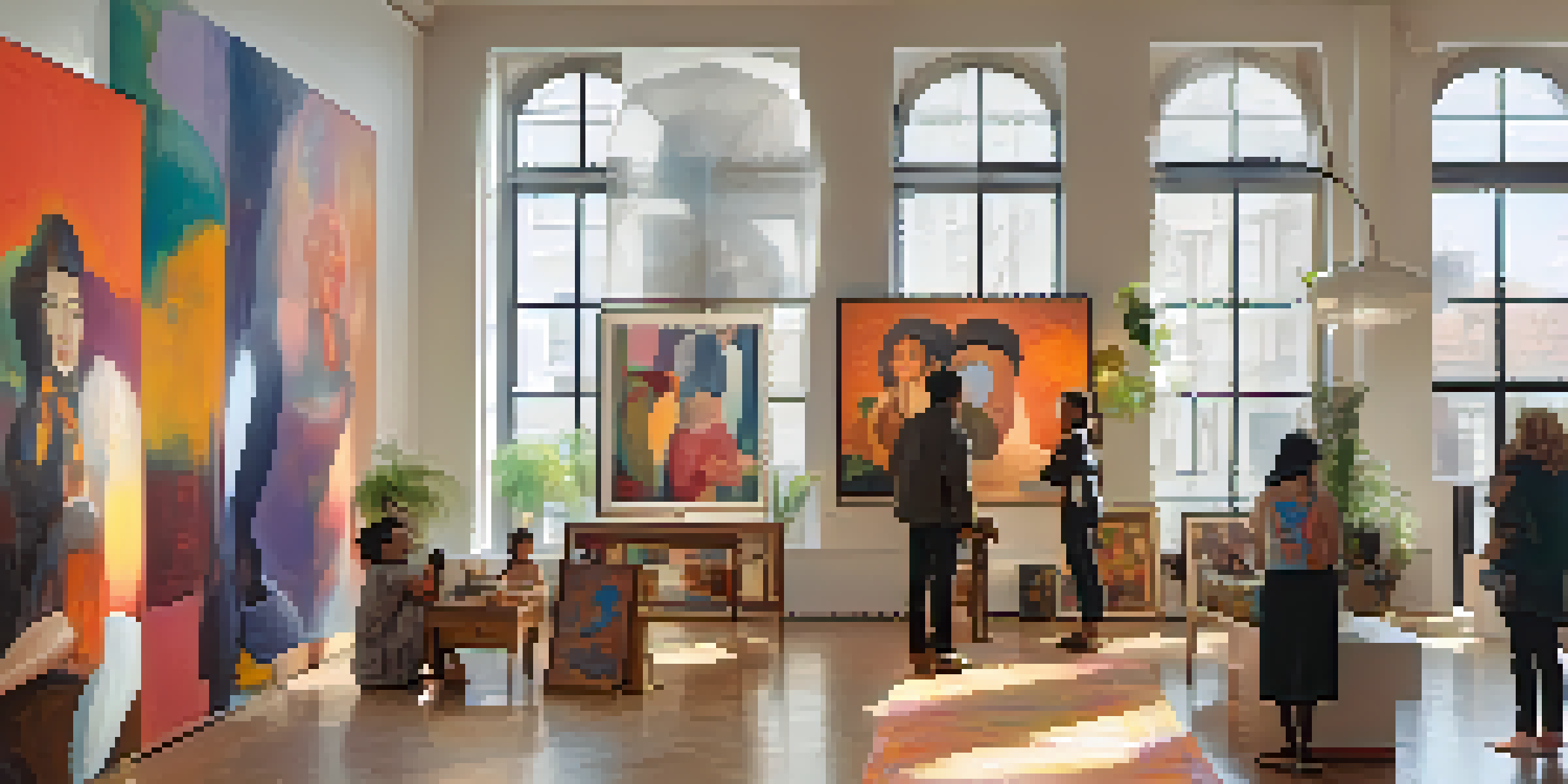The Impact of Intersectionality on Women Artists' Work

Understanding Intersectionality in Art and Society
Intersectionality is a concept that explores how various social identities, such as race, gender, and class, intersect and influence one's experiences. For women artists, these overlapping identities can deeply affect their creative expression and reception in the art world. Understanding intersectionality allows us to appreciate the complexities of their work and the unique perspectives they bring to the table.
Historical Context: Women Artists and Marginalization
Historically, women artists have often faced significant barriers, not just due to their gender, but also because of race, ethnicity, and socio-economic status. Many female artists from marginalized communities have been overlooked in art history, despite their contributions. By examining this history, we can see how systemic issues have shaped the narratives around women artists and their work.
Intersectionality Shapes Art
Intersectionality influences how women artists express their identity and creativity, highlighting the complexities of their experiences.
The Role of Identity in Shaping Artistic Expression
An artist's identity plays a crucial role in how they express themselves creatively. For women artists, their experiences as women, combined with other aspects of their identity, can influence their choice of themes, materials, and techniques. This intersection of identities allows for rich, multifaceted works that challenge traditional narratives and offer fresh perspectives.
Intersectionality and Audience Reception
The way audiences perceive and engage with women's art can be heavily influenced by the artist's intersectional identity. For instance, a piece created by a Black woman may be interpreted through different lenses than that of a white woman. This variance in reception highlights the importance of understanding context and background when discussing the impact of women artists.
Historical Marginalization Matters
Women artists have historically faced barriers due to their intersecting identities, which has shaped their representation in art history.
Collaborative Movements and Intersectional Art
Many women artists are part of collaborative movements that emphasize intersectionality, bringing together diverse voices and perspectives. These collaborations often lead to powerful art that resonates on multiple levels and speaks to various audiences. By working together, these artists create a sense of community and shared experience that enriches their individual practices.
Case Studies: Influential Intersectional Women Artists
Artists like Frida Kahlo and Zanele Muholi exemplify how intersectionality can inform and elevate an artist's work. Kahlo's exploration of her identity as a Mexican woman, and her experiences with pain and disability, resulted in deeply personal yet universally relatable art. Similarly, Muholi’s photography challenges norms around race and gender, highlighting the experiences of LGBTQ+ individuals in South Africa.
Diversity is Gaining Recognition
There is a growing acknowledgment of the importance of diversity in the art world, leading to increased visibility for intersectional women artists.
Contemporary Trends: Celebrating Diversity in the Art World
Today, there is a growing recognition of the need for diversity in the art world, which has led to increased visibility for women artists from various backgrounds. Art institutions are beginning to showcase more intersectional work, allowing underrepresented voices to be heard. This shift is essential for fostering a more inclusive and representative art community.
The Future: Intersectionality in Art and Beyond
As we look to the future, the impact of intersectionality on women artists is likely to continue evolving. With ongoing discussions about inclusivity and representation, artists will likely find new ways to express their intersecting identities. This evolution not only enriches the art world but also encourages broader societal conversations about identity and experience.